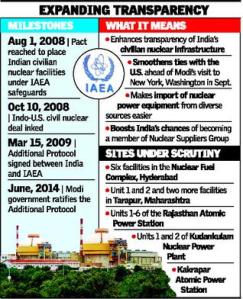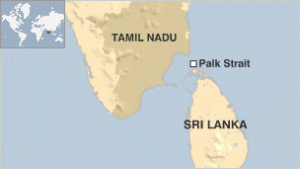Ques. “Enhancing transparency of India’s nuclear infrastructure by ratifying an Additional Protocol with the International Atomic Energy Agency (IAEA) is a step that in a single stroke can be leveraged to boost energy security and lift international confidence”, Comment.
India has a flourishing and largely indigenous nuclear power program. Because India is outside the Nuclear Non-Proliferation Treaty due to its weapons program, it was for 34 years largely excluded from trade in nuclear plant or materials, which has hampered its development of civil nuclear energy until 2009.Due to these trade bans and lack of indigenous uranium, India has uniquely been developing a nuclear fuel cycle to exploit its reserves of thorium. Now, foreign technology and fuel are expected to boost India’s nuclear power plan considerably. All plants will have high indigenous engineering content. India has a vision of becoming a world leader in nuclear technology due to its expertise in fast reactors and thorium fuel cycle.
Recently, India has decided to enhance transparency of its nuclear infrastructure by ratifying an Additional Protocol with the International Atomic Energy Agency (IAEA) that may boost its energy security and lift international confidence in the following ways:
- Enhances transparency of India’s civilian infrastructure
- Smoothens ties with the US
- Makes import of nuclear power equipment from diverse sources easier
- Boosts India’s chance of becoming a member of Nuclear supplier group
The Indian government would be wise to reconsider its vision of nuclear energy so that it does not seem limited to simply getting its technology right. Creating robust policy debates across domains such as solar and wind power will benefit India’s energy development as a whole. Sociological and anthropological perspectives must be integrated into policy discussions. Advancing the principles of democracy such as citizenship rights and government accountability will promote critical thinking about maximizing the public good beyond a simple cost-benefit analysis of market economics. That is the best approach, if India is to have a nuclear energy program that is socially just, environmentally sustainable, and economically feasible.








